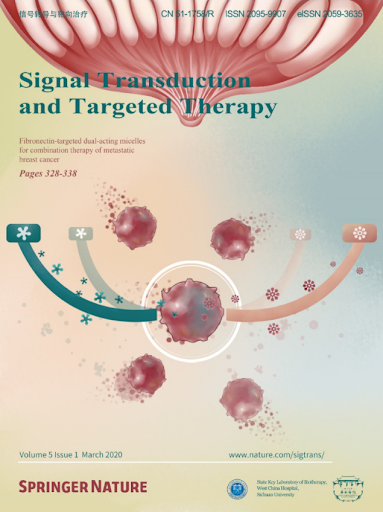Proliferative diabetic retinopathy subtypes defined by immune defense and endothelial mitochondrial dysfunction.
IF 52.7
1区 医学
Q1 BIOCHEMISTRY & MOLECULAR BIOLOGY
引用次数: 0
Abstract
Proliferative diabetic retinopathy (PDR) is a major complication of diabetes characterized by pathological angiogenesis in the retina. Standard treatment includes vitrectomy to remove these abnormal vessels, and the resulting clinical specimens provide an opportunity to define drivers of PDR. Here, we profiled endothelial and immune cells from such samples to identify disease mechanisms. In some patients, endothelial cells were more abundant, whereas in others, immune cells predominated. Immune cells exhibited gene expression programs directed against pathological endothelium, suggesting an endogenous defense that may explain the scarcity of endothelial cells in certain cases. Preoperative anti-vascular endothelial growth factor (VEGF) therapy altered transcriptional programs in both endothelial and immune cells, indicating that its effects extend beyond the vasculature. A comparison of endothelial signatures from PDR patients and nondiabetic donor retinas revealed a distinct molecular program in PDR, prominently marked by mitochondrial dysfunction. In contrast, endothelial cells from the murine oxygen-induced retinopathy (OIR) model lacked mitochondrial dysfunction, although other features of pathological angiogenesis were shared. These findings suggest that PDR is not a uniform disease but comprises distinct types characterized by either immune-mediated clearance of pathological vessels or endothelial mitochondrial dysfunction. They also revealed that anti-VEGF therapy influences both endothelial and immune compartments, with implications for treatment strategies. Finally, the data clarify both the relevance and limitations of the OIR model for preclinical testing of new therapeutic targets.由免疫防御和内皮线粒体功能障碍定义的增殖性糖尿病视网膜病变亚型。
增殖性糖尿病视网膜病变(PDR)是糖尿病的主要并发症,其特征是视网膜的病理性血管生成。标准治疗包括玻璃体切除术以去除这些异常血管,由此产生的临床标本为确定PDR的驱动因素提供了机会。在这里,我们分析了来自这些样本的内皮细胞和免疫细胞,以确定疾病机制。在一些患者中,内皮细胞更丰富,而在另一些患者中,免疫细胞占主导地位。免疫细胞表现出针对病理性内皮的基因表达程序,表明内源性防御可能解释了某些情况下内皮细胞的缺乏。术前抗血管内皮生长因子(VEGF)治疗改变了内皮细胞和免疫细胞的转录程序,表明其作用超出了血管系统。通过对PDR患者和非糖尿病供体视网膜内皮细胞特征的比较,我们发现PDR中存在一个独特的分子程序,其显著特征是线粒体功能障碍。相比之下,小鼠氧诱导视网膜病变(OIR)模型的内皮细胞缺乏线粒体功能障碍,尽管病理性血管生成的其他特征是相同的。这些发现表明PDR不是一种统一的疾病,而是由不同类型的病变血管的免疫介导清除或内皮线粒体功能障碍为特征。他们还揭示了抗vegf治疗对内皮细胞和免疫细胞都有影响,这对治疗策略也有影响。最后,这些数据阐明了OIR模型用于新治疗靶点临床前测试的相关性和局限性。
本文章由计算机程序翻译,如有差异,请以英文原文为准。
求助全文
约1分钟内获得全文
求助全文
来源期刊

Signal Transduction and Targeted Therapy
Biochemistry, Genetics and Molecular Biology-Genetics
CiteScore
44.50
自引率
1.50%
发文量
384
审稿时长
5 weeks
期刊介绍:
Signal Transduction and Targeted Therapy is an open access journal that focuses on timely publication of cutting-edge discoveries and advancements in basic science and clinical research related to signal transduction and targeted therapy.
Scope: The journal covers research on major human diseases, including, but not limited to:
Cancer,Cardiovascular diseases,Autoimmune diseases,Nervous system diseases.
 求助内容:
求助内容: 应助结果提醒方式:
应助结果提醒方式:


